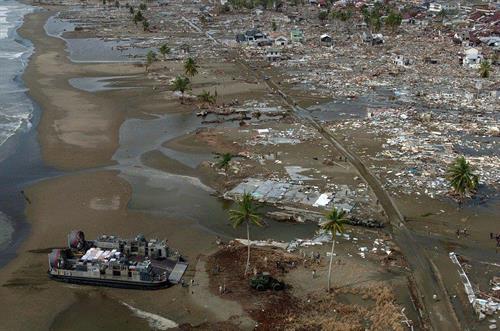PDF chapter test TRY NOW
Tsunami is giant waves generated by earthquakes, volcanic eruptions and underwater landslides. These waves cause huge losses to human life and properties in coastal areas.
These waves travel can between \(640\ km/h \)and \(960\ km/h\) and are generally noticed in coastal regions.
The word ‘Tsunami’ is originated from the Japanese word ‘tsu’ meaning 'harbour', and ‘nami’ meaning 'wave' (Harbour wave).
Tsunami 2004
The catastrophic Tsunami was trigger by an earthquake, a magnitude of \(9.1 - 9.3\ \)(on the Richter scale), with its epicentre in the Indonesian island of Sumatra. It was one of the biggest Tsunamis the modern world had ever witnessed, killing more than 2,00,000 people in Asia. The height of the waves was recorded over up to 30 metres. In India, more than 10,000 people died. Tamil Nadu was one of the worst affected states that reported over 1,705 deaths. Coastal districts, particularly Nagapattinam, were worst affected.

This Tsunami was a massive blow for the unprepared crowd, including fishermen, tourists, morning walkers, children playing on the beach and people living on the coast. It was a nightmare for most of the coastal residents. To be prepared for the future, the Government of India set up a Tsunami Early Warning System at Indian National Centre for Ocean Information Services (INCOIS), Hyderabad, in 2007.
